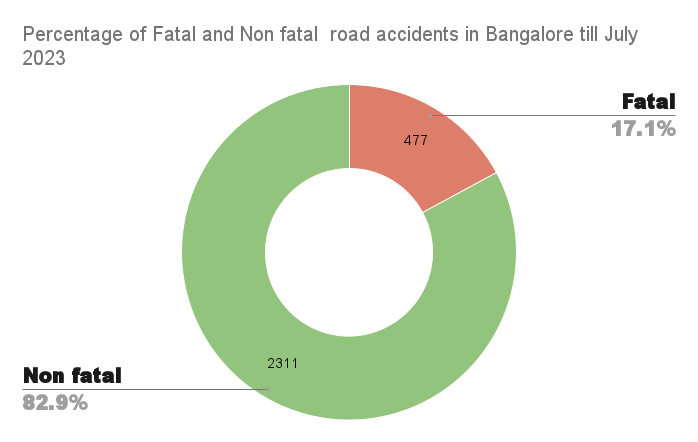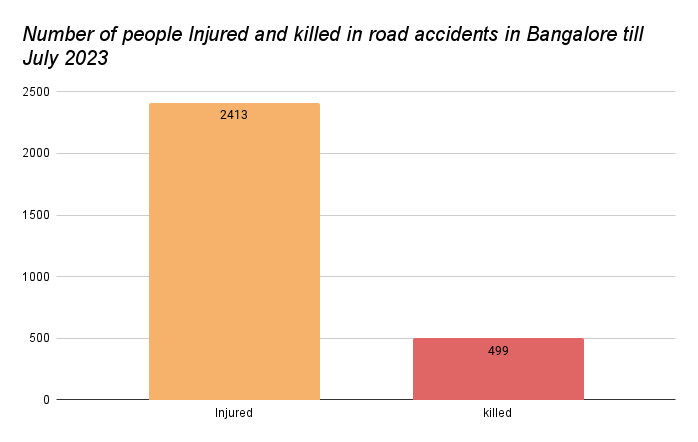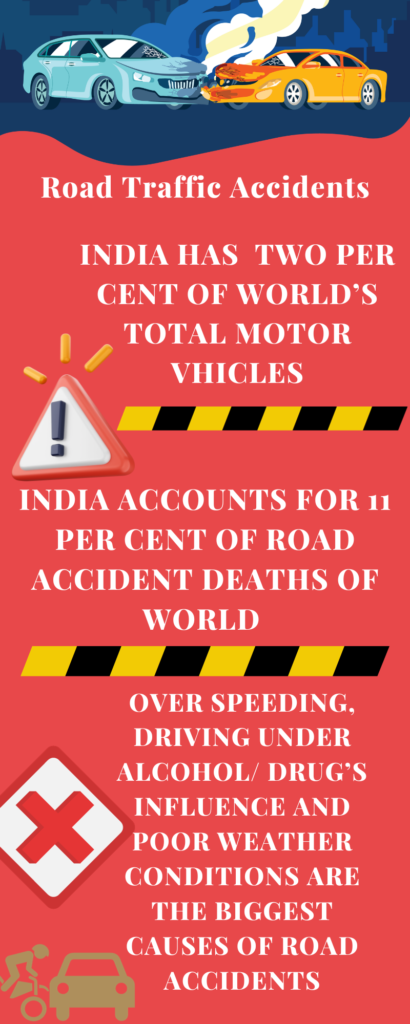Private cars accounted for 28 percent of total accidents while bikes made up to 25 percent of them.
Despite various programs being run by the traffic police for road safety in the city, the number of accidents has not been going down, with an average of 13 accidents happening every day. According to data by the city traffic police, a total of 3228 road accident cases have been registered in the city in the last eight months of which 2247 were non-fatal and 543 were fatal. In 2022, the city had recorded 3,827 in the entire year killing 777 people.
North Bangalore has accounted for most number of accidents with as many as 853 accidents till July this year whereas east Bangalore accounted for the least number of accidents with 443 accidents till July.
The then special traffic police commissioner, MA Saleem in an interview link? to a newspaper said, “Presence of broad roads and highways in areas like Yelahanka is the main cause of high number of fatalities. Kempegowda International Airport expressway also scythes through Yelahanka and Chikkajala. Vehicles move at higher speed on these roads and that’s why they see more fatal accidents.”

According to the data provided by the government, India accounts for about two percent of motor vehicles in the world but is responsible for more than 11 percent road accident deaths.
According to the Ministry of Road Transport and Highways, 1130 accidents happen every day in the country killing 18 people every hour. Latest National Crime Records Bureau (NCRB) data suggests that over speeding accounts for 59.6 per cent of the total accidents.
Of the total accident cases, 2.6 per cent were due to poor weather conditions. On the other hand, driving under the influence of drugs/alcohol contributed to 1.7 per cent of total accidents.

According to the NCRB data, Bangalore is the third largest city in terms of road accident deaths in the country. Of the number of the total accident cases reported in the city last year, more than 80 percent have been reported in only eight months this year.
If the trend continues, the number of accidents in the city will touch the 5000 mark by December.
An expert in road safety, Harman, Arrive Safe, said, “The Best Practices Manuals have been published by a consortium of World Bank, WHO and Global Road Safety Partnership. The Ministries of Housing and Urban Affairs and Road Transport and Highways, both have formulated guidelines but they are not being implemented. All we need to do is study them and implement them with minor tweaking as per our local needs.”

Bangalore traffic police has been running several road safety awareness programs like School Association for Road Safety which aims to spread awareness and teach school students about road safety norms. The city traffic police trained 24,502 people in 2022 for road safety measures at the Traffic Training Road Safety Institute, here in Bangalore.
Bangalore Traffic police Inspector Anil Kumar Grampurohit said “Lack of last mile connectivity in the city makes people use private vehicles which results in congested roads.” Yet, the traffic police avoids punishments, he said. “We follow the policy of regulation rather than enforcement when it comes to traffic rules,” he added.
An expert in road safety, Mr. Harman from Arrive safe, said, “Awareness programs are one part of the bigger picture. India is a signatory of the UN Decade of Road Safety 2021-2030 which has defined five main pillars of road safety— management, infrastructure, safe vehicles, road user behavior and post-crash care.” Focusing only on awareness programs won’t help reduce the figures, Harman said.
According to news reports, Bangalore traffic police recently identified 60 black spots—areas that are accident prone areas in the city and suggested measures like installation of accident zone signboards, construction of skywalks, CCTV cameras, road humps, street lights, speed limit signage boards and placement of cat eyes and blinkers.
Road safety is one of the ‘Sustainable Development Goals’ of the United Nations. SDG 3.6 aims to halve the number of global deaths and injuries from road traffic accidents.
Along with that SDG 11.2 targets providing access to safe, affordable, accessible and sustainable transport systems for all, improving road safety and expanding public transport.
“Minimizing the interaction of pedestrians, two-wheeler riders with four wheelers and other heavy vehicles can help reduce the number of fatal accidents in cities like Bangalore,” the expert said.




